
LGBTQ+ Couples: Histories, Realities, and the Future of Love
1.LGBTQ+ Couples – Introduction
LGBTQ+ couples—spanning lesbian, gay, bisexual, transgender, queer, intersex, and beyond—are as diverse and multifaceted as any other couples. Yet, their histories, legal recognitions, and cultural representations differ significantly due to societal prejudice, evolving laws, and a lengthy fight for acceptance. From inspiring celebrity LGBTQ couples to everyday pairings forging loving bonds in the face of challenges, these relationships show that love transcends gender norms, rigid definitions of sexuality, and outdated prejudices.
There was a time when same-gender love was nearly invisible in most societies, forced underground by legal restrictions and social taboos. Today, many nations legally recognize same-sex marriages or civil partnerships, and depictions of LGBTQ couples have become more common in media. Still, in many parts of the world, same-sex relationships remain criminalized, and couples live under constant threat of violence or separation.
In this long-form blog post, we explore where LGBT people find their partners, examine same-sex couple data & demographics, and look at the unique financial planning considerations for LGBTQ+ couples. We also delve into the specific ways these couples build and maintain their relationships, highlight famous LGBTQ+ couples who have been together for over 10 years, and consider the role of activism in shaping the modern legal landscape. Meanwhile, intersectional factors—such as race, class, and disability—add layers of complexity to LGBTQ relationships.
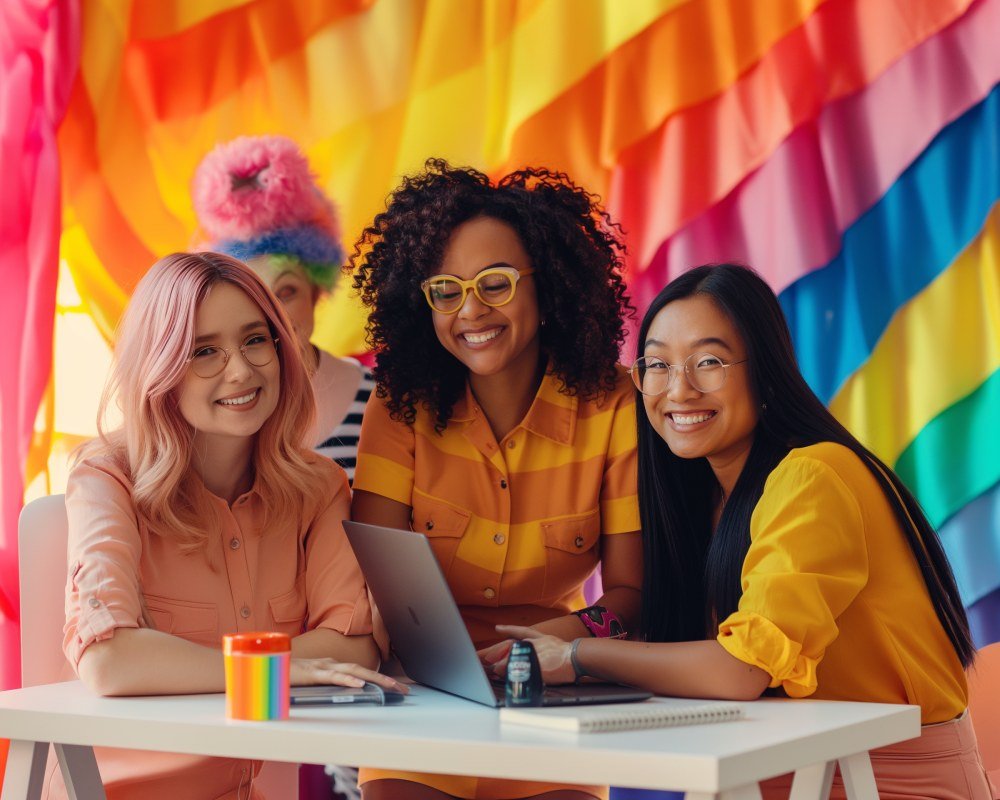
LGBTQ+ Couples: Histories, Realities, and the Future of Love
Additionally, we discuss what LGBTQ+ relationships can teach us about love—from breaking free of rigid gender roles to embracing open communication. We also break down what challenges do LGBTQ couples face, recognizing that discrimination, stigma, and family rejection can still weigh heavily.
Along the way, we’ll present comparative tables to contrast how LGBTQ+ couples have been viewed historically versus in contemporary society, and how acceptance varies across regions. Through this journey, readers will gain a deeper understanding of both the everyday realities of these relationships and the broader struggles for recognition, respect, and equality.
Above all, it’s crucial to remember that while legal and societal factors inform the experiences of LGBTQ couples, the core essence of these relationships—shared affection, partnership, and mutual growth—remains universal. Whether under the banner of “LGBTQ+ couples” or simply “couples,” these connections underscore that love, in its many forms, is a fundamental part of the human story.
Advertisement · Scroll to continue
Recommended
2. A Brief Historical Perspective on LGBTQ+ Couples
Long before modern activism, LGBTQ+ couples existed across diverse civilizations. Evidence of same-sex bonds, gender-variant relationships, and queer love emerges from ancient art, poetry, and legal codes worldwide. However, acceptance varied greatly by culture and era:
- Antiquity: Ancient Greece and Rome feature records of relationships between men—often erastes (older partner) and eromenos (younger partner)—while in many tribal societies, fluid concepts of gender and marriage were recognized. In some Indigenous cultures, two-spirit individuals took on unique social roles.
- Medieval and Colonial Eras: As monotheistic religions (Christianity, Islam) expanded, same-sex love was often criminalized or condemned. In Europe, sodomy laws carried severe punishments. Colonial powers also exported these laws globally, shaping modern anti-LGBTQ statutes still prevalent in parts of Africa, Asia, and the Caribbean.
- Underground Communities: Despite oppression, same-gender couples formed clandestine subcultures. The concept of “Boston marriages” in 19th-century America referred to two women living together, often romantically, though outwardly framed as companionship. Meanwhile, cross-dressing performers and clandestine bars provided safe havens.
- Early 20th Century: In places like Berlin during the Weimar Republic, queer nightclubs and networks flourished briefly before repressive regimes like the Nazis clamped down on homosexual expression. Some Western writers and artists (e.g., Gertrude Stein, Alice B. Toklas) found acceptance in bohemian circles abroad.
- Mid-20th Century to Stonewall: Post-WWII, many LGBTQ individuals faced psychiatric pathologization and criminal persecution. The 1960s witnessed incremental changes, culminating in the Stonewall Riots of 1969 in New York, a turning point that galvanized the gay rights movement and encouraged same-gender couples to push for open recognition.
- Late 20th Century Onward: Decriminalization efforts in various countries gained traction. Denmark legalized “registered partnerships” in 1989, pioneering same-sex legal recognition. By the 1990s and early 2000s, several nations recognized same-sex unions or marriages. This shift parallels broader social acceptance, though backlash persists in conservative regions.
- 21st Century Milestones: Netherlands became the first country to fully legalize same-sex marriage in 2001. A domino effect followed across Europe, the Americas, parts of Oceania, and even some enclaves in Asia. LGBTQ couples began openly demanding marriage equality, adoption rights, and protection from discrimination.
Persistence of Inequality
Despite these advancements, many places cling to archaic sodomy laws. LGBTQ couples in such regions risk arrest or violent attacks. Some must flee to more liberal nations for asylum or acceptance. Cultural stereotypes remain deeply rooted, influencing family acceptance and everyday interactions.
Contemporary Reflection
This historical narrative underscores that LGBTQ couples were never absent; they often adapted to hostile environments through coded references, secret alliances, or even exile. Modern progress, while inspiring, rests on the sacrifices of earlier generations who championed love and self-determination in defiance of oppressive norms.
Understanding this backdrop illuminates the emotional resonance behind celebrations of marriage equality and the continuing sense of urgency in places where the presence of an LGBTQ couple is still criminalized or taboo. History demonstrates resilience and adaptation—reminding us that the fight for acceptance is long-running, with each new victory a testament to collective courage.
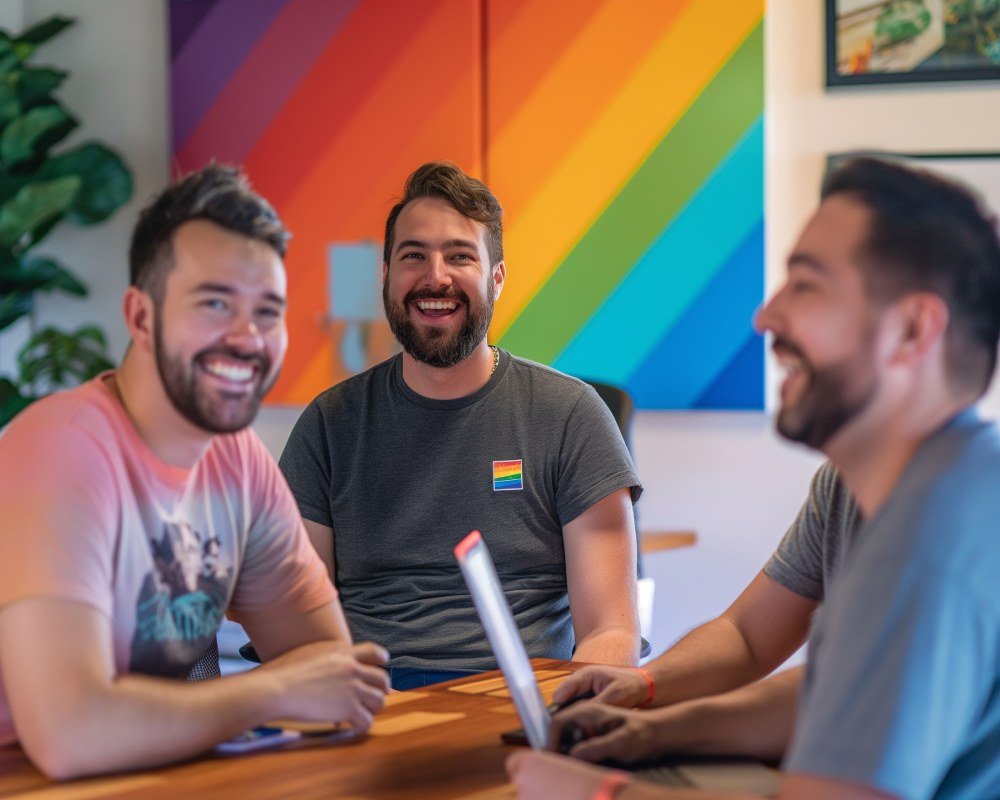
3. Same-Sex Couple Data & Demographics: A Global Snapshot
As LGBTQ+ couples gain visibility, data-driven insights help illustrate their realities. Collecting reliable statistics can be challenging—some individuals remain closeted due to stigma or legal issues, while many censuses worldwide lack inclusive questions. Nevertheless, available research reveals significant trends and demographics.
Global Overview
- Population Estimates: Although exact percentages vary, a frequently cited figure suggests 5-10% of the global population may identify as lesbian, gay, or bisexual, with a smaller but notable proportion identifying as transgender or non-binary. Many people also exist under the queer/questioning umbrella. However, self-reporting is influenced by cultural acceptance; in hostile environments, individuals are less likely to disclose.
- Legally Recognized Unions: As of the 2020s, around 30+ countries grant full marriage equality, while many others offer civil partnerships or domestic unions. Millions of same-sex couples worldwide thus enjoy varying degrees of legal standing, though exact numbers are difficult to quantify due to limited official data collection.
Regional Disparities
- North America and Western Europe: These regions typically have higher rates of out LGBTQ individuals, with growing acceptance. Data from the U.S. Census (2020) indicated that roughly 1.5 million same-sex households existed, reflecting both married and unmarried couples. In Western Europe, strong social welfare systems often track partnership status, showing an upward trend in registered same-sex unions.
- Latin America: Countries like Brazil, Colombia, and Argentina have recognized same-sex marriage or civil unions. While acceptance is on the rise, homophobic violence remains a concern. Official demographic data can be patchy—some countries collect it, others do not.
- Africa: In many African nations, homosexuality remains illegal; thus, formal data on same-sex couples is scarce. South Africa is an outlier, legalizing same-sex marriage in 2006. Though official stats are limited, a 2018 estimate suggested tens of thousands of same-sex couples might be cohabiting.
- Asia: Legality and acceptance vary widely. Taiwan’s 2019 legalization of same-sex marriage places it at the forefront in Asia. In contrast, large populations in countries like China and India remain closeted due to conservative family norms—making data collection difficult. Nonetheless, activism and growing urban liberalism hint at significant but underreported same-sex partnerships.
Family Structures and Parenting
Contemporary research finds that the number of LGBTQ couples raising children is increasing, especially in regions with legalized adoption or surrogacy. For instance, in the U.S., about 15-20% of same-sex households have children. Similar trends appear in Northern Europe, where supportive legal frameworks facilitate adoption, IVF, or surrogacy for same-sex pairs.

Underreported Realities
Surveys also highlight that bisexual and trans individuals remain underrepresented in official data. Many trans individuals may not identify as a “same-sex couple” due to complexities in how orientation is measured relative to assigned vs. affirmed gender.
Key Takeaway: While exact figures are elusive, same-sex couple data & demographics underscore an expanding global presence, propelled by legal shifts and cultural evolution. These numbers affirm that LGBTQ couples are not a niche subset but a significant, if sometimes hidden, portion of families worldwide. As data collection improves and stigmas recede, more accurate metrics will likely validate what the LGBTQ community has long known: these relationships are everywhere, contributing richly to society.
4. Where Do LGBT People Find Their Partners? Pathways to Connection
For LGBTQ couples, the question “Where do LGBT people find their partners?” reflects a range of unique contexts—from navigating historically clandestine spaces to modern digital dating platforms. While heterosexual romance sometimes unfolds through mainstream channels, queer communities often have distinctive ways of meeting and forming relationships.
1. Historical and Underground Scenes
- Gay Bars and Clubs: Before widespread acceptance, gay bars functioned as safe havens for men who loved men, and over time, lesbians created their own spaces too. In many cities, these venues remain central social hubs.
- Community Events: Dances or meet-ups organized by secret societies (e.g., The Mattachine Society) or underground networks provided a rare chance to socialize without fear.
- Code Words and Signals: In eras of heightened persecution, coded language (like wearing specific attire or referencing historical figures) helped identify potential partners discreetly.
2. Digital Dating Platforms
- Dating Apps: Platforms like Grindr (primarily for men seeking men), HER (for women seeking women), and more general apps (e.g., Tinder, Bumble) are widely used. The anonymity of online profiles offers safety in places where coming out is risky.
- Social Media: Facebook groups, Instagram, Twitter, and even TikTok host queer-friendly communities. Some friendships evolve into romantic bonds, especially for youth discovering orientation in supportive online circles.
- Niche Websites: Web forums catering to specific subsets—trans folks, older gays, BDSM subcultures, etc.—also provide meeting points for those with shared interests and identities.
3. Intersectional Spaces
- Activist Circles: Pride committees, LGBTQ nonprofits, or social justice groups often become relationship incubators. Working collectively on equality or healthcare campaigns can foster close bonds that turn romantic.
- College Campuses: Many universities have LGBTQ student organizations or Gender and Sexualities Alliances. Students find safe spaces to mingle without the fear of homophobic or transphobic harassment, leading to friendships and relationships.
4. Family and Friend Introductions
- Chosen Families: In supportive subcultures, chosen family networks might introduce single friends, or couples invite a friend to a gathering. Word-of-mouth matchmaking is common, bridging mutual trust.
- Local Cultural Scenes: Poetry slams, queer art exhibits, or film festivals can spark connections. Attendees often share not only an LGBTQ identity but broader creative or intellectual interests.
5. International and Online Romance
Increasingly, LGBTQ individuals connect across borders—through specialized travel groups or international Pride events. Some find love in overseas Pride festivals, language exchanges, or digital pen-pal communities, culminating in cross-cultural relationships.
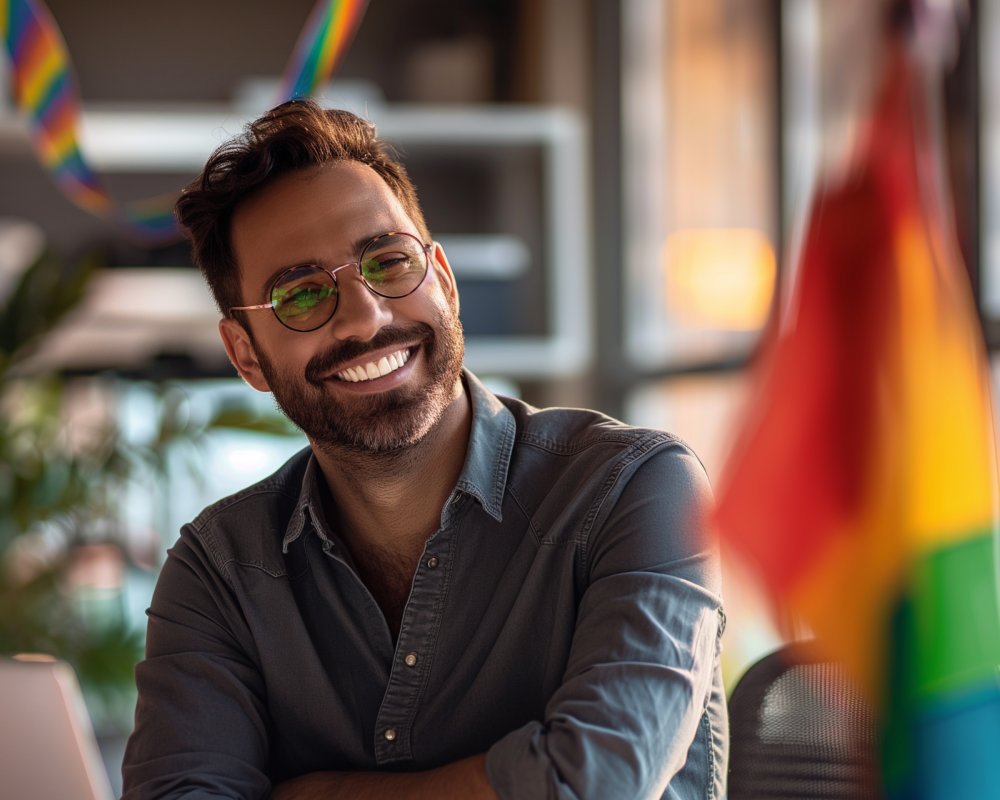
Safety Considerations
Meeting a partner can involve risk if local societies are deeply homophobic or if individuals remain closeted. Using discreet apps or attending private events might help, but fear of exposure still looms in more repressive regions. For some, anonymity on the internet has become a lifeline, enabling them to explore identity and find potential partners with minimal real-world danger.
Conclusion: The ways LGBTQ people find each other are as varied as the community itself—ranging from historically secret codes to modern apps that boast millions of users. Though mainstream dating channels have expanded to include same-gender options, niche or queer-specific spaces remain cherished for their sense of safety and cultural resonance. Ultimately, the search for love, companionship, or even casual connections resonates with universal human desires, though sometimes shaped by the distinct experiences of being LGBTQ in a heteronormative world.

Advertisement · Scroll to continue
Recommended
5. Defining LGBTQ Couples: Identity, Terms, and Evolving Language
While “LGBTQ couples” might seem straightforward—two individuals in a romantic partnership who identify as lesbian, gay, bisexual, transgender, queer, etc.—delving deeper reveals complex identity, terms, and evolving language that shape how these relationships are perceived and labeled.
1. Broad Yet Specific Acronyms
- LGB: Refers primarily to sexual orientations (lesbian, gay, bisexual).
- T: Centers on gender identity (transgender).
- Q+: Expands beyond fixed labels, including queer, questioning, intersex, asexual, and more.
When we say “LGBTQ+ couples,” we encompass any combination of these identities. For instance:
- A cisgender gay man and another cisgender gay man.
- A bisexual woman with a non-binary partner.
- A transgender man with a lesbian identity partnered with a bisexual cisgender man.
Each pairing defies simplistic “same-sex” or “opposite-sex” categories, showcasing the spectrum of orientation and gender identity.
2. Why Terminology Matters
Language shapes perception. The term “same-sex couple” might be too narrow if, for example, one partner is non-binary or if a trans man and a cis woman identify as a straight couple despite transphobic societal assumptions. Meanwhile, “LGBTQ couples” underscores that both orientation and gender identity define the relationship dynamic.
3. Inclusive Phrasing
- Gender-Neutral Terms: “Partner,” “spouse,” or “significant other” can be used instead of “husband” or “wife,” especially if a couple wants to downplay binary markers or highlight fluidity.
- Preferred Pronouns: Some couples highlight pronouns (e.g., she/her, they/them) to reinforce that typical assumptions don’t always align with their reality.
4. Intersection of Orientation and Identity
A trans woman who is attracted to men might identify as heterosexual, but the relationship is still often labeled under “LGBTQ+ couples” because one partner is trans. Similarly, two bisexual people in a monogamous relationship might appear “straight” or “gay” from the outside, but their identity remains bi, which is often invisible to mainstream classifications.
5. Ongoing Evolution
New terms keep emerging—like “enby” (slang for non-binary), “ace” (asexual), or “aro” (aromantic)—further expanding the lexicon. Relationship structures vary too: polyamorous or open relationships exist within the LGBTQ sphere, challenging monogamy norms.
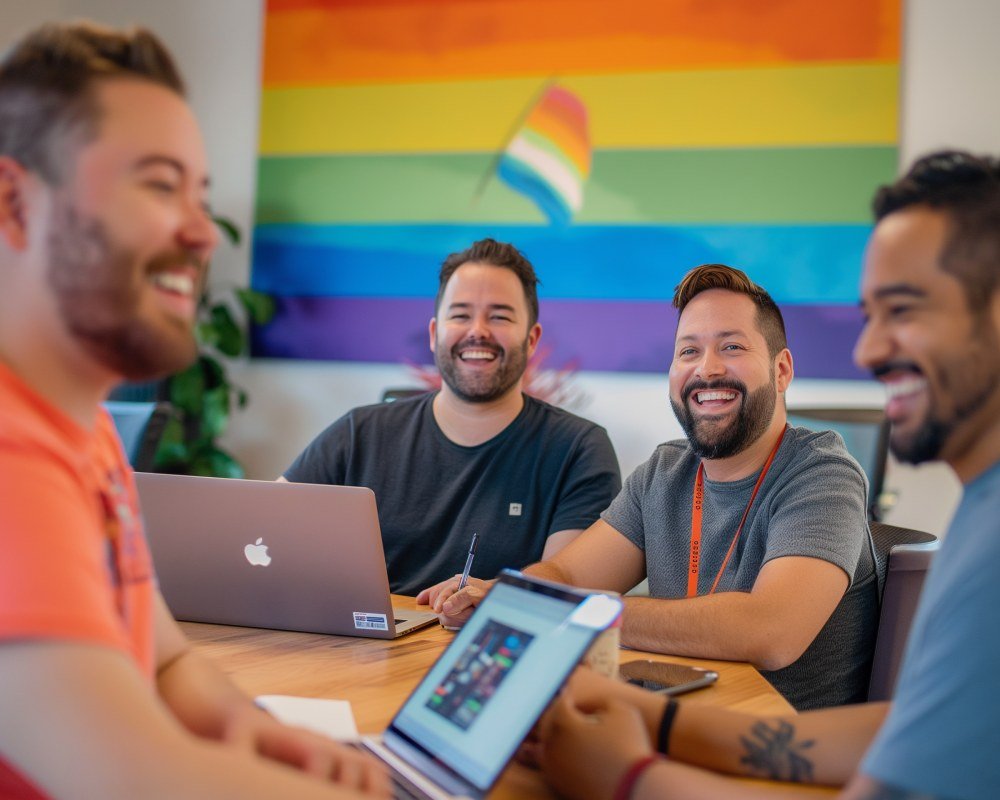
6. Cultural Sensitivities
Even within the LGBTQ community, debates arise. Some older gay men might resist the broader acronym, feeling it dilutes the gay identity focus. Others embrace umbrella terms for their inclusiveness. Regional differences matter: in certain languages or cultures, local idioms or identity words hold significance that Western acronyms may not capture.
Conclusion: “Defining LGBTQ couples” transcends labeling a relationship as “two men” or “two women.” Identity, orientation, expression, and cultural background all inform how individuals define themselves and present their partnerships. As language continues to evolve—spurred by activist circles, academic research, and personal narratives—these definitions expand, ensuring that love between individuals beyond heteronormative boundaries is recognized in all its complexity and nuance.
6. Inspiring Celebrity LGBTQ Couples: Breaking Barriers in the Spotlight
Over the past few decades, inspiring celebrity LGBTQ couples have shone a powerful spotlight on love that transcends heteronormative expectations. Their openness fosters broader acceptance, challenges stereotypes, and provides visibility for communities often hidden in the entertainment and media industries.
1. Historic Trailblazers
- Ellen DeGeneres and Portia de Rossi: Arguably one of the most high-profile lesbian couples, they married in 2008 after the California Supreme Court legalized same-sex marriage. Ellen’s coming out in 1997, combined with their enduring union, normalized lesbian relationships for mainstream audiences.
- Elton John and David Furnish: Elton John, a legendary musician, and David Furnish, a filmmaker, entered a civil partnership in 2005 and later married in 2014 once England & Wales legalized same-sex marriage. Their relationship exemplified how high-profile figures could adopt children and create stable family units, thus reshaping public perceptions of gay fatherhood.
2. Visible Role Models in Hollywood
- Neil Patrick Harris and David Burtka: This couple’s openness about raising twin children has helped shift societal views on gay parenting. Their joint public appearances, social media posts, and philanthropic work highlight the joys of family life.
- Wanda Sykes and Alex Niedbalski: Comedian Wanda Sykes’ marriage to Niedbalski underscores that comedic talent and sharp wit go hand in hand with an active stance on LGBTQ advocacy. Sykes has often used her platform to champion equality.
3. Breaking Ground for Trans Representation
- Laverne Cox and Former Partners: While not always in the public eye, Laverne Cox’s relationships have underscored the importance of trans inclusivity. Being vocal about her experiences with love and heartbreak disrupts the narrative that trans people can’t find fulfilling partnerships.
- Angelica Ross and Partners: Star of “Pose,” Angelica Ross has spoken about dating challenges as a trans woman, shining a light on the unique complexities that trans folks navigate when seeking love.
4. Younger Generations and Social Media
- Sam Smith and Brandon Flynn (now split): Though no longer together, their short-lived, open relationship on social media catalyzed discussions about bisexual, non-binary, or gay identities among millennials and Gen Z.
- Cara Delevingne and Partners: Delevingne’s pansexual identity, plus high-profile relationships (like with actress Ashley Benson), resonated with fans exploring fluid identities. Her unwavering public statements about authenticity encourage acceptance.
5. Cultural Impact
The significance of these couples isn’t solely about glitz and glamour. By existing authentically, they challenge limiting beliefs that LGBTQ relationships must remain hidden or politicized. Tabloid coverage, while sometimes invasive, also forced mainstream audiences to confront their own biases. Over time, seeing same-gender couples on red carpets, adopting children, or celebrating anniversaries reshapes the social imagination—turning what was once taboo into something ordinary and cherished.
Conclusion: When celebrities come out and sustain visible partnerships, they yield an immense ripple effect—reaching millions who may have never personally encountered an openly LGBTQ couple. These stars become beacons, normalizing love that knows no gender constraints and providing tangible proof that queer relationships can thrive. In short, inspiring celebrity LGBTQ couples not only humanize the community’s aspirations but also act as catalysts for cultural and social change far beyond their individual fan bases.

7. Famous LGBTQ+ Couples Who Have Been Together for Over 10 Years
Amidst Hollywood’s fast-paced romances and dramatic breakups, many famous LGBTQ+ couples who have been together for over 10 years prove that long-lasting love and commitment transcend the glare of publicity. Their milestones refute stereotypes of queer relationships as fleeting or unstable.
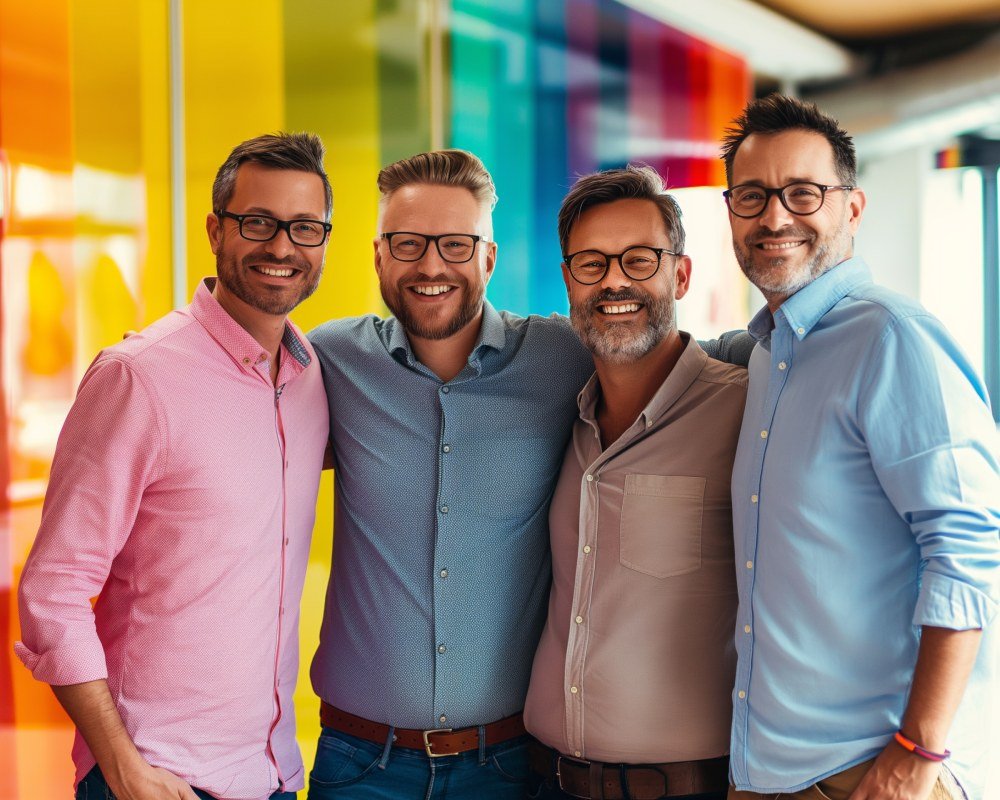
1. Elton John and David Furnish
- Relationship Length: Together since the early 1990s, they entered a civil partnership in 2005, then legally wed in 2014.
- Notable Achievements: Renowned for philanthropic efforts, especially through the Elton John AIDS Foundation. They also parent two sons, demonstrating that gay men can nurture a robust family life.
2. George Takei and Brad Altman
- Relationship Length: Partners for over 35 years before officially marrying in 2008 when California’s same-sex marriage ban was briefly lifted.
- Influence: Takei’s “Star Trek” fame merged with vocal LGBTQ advocacy, while Brad stands resolutely by his side at Pride events and political rallies, epitomizing devotion across decades.
3. Jane Wagner and Lily Tomlin
- Relationship Length: Partners since 1971, Lily Tomlin (actress/comedian) and Jane Wagner (writer/producer) kept a low-key profile for years due to Hollywood’s homophobia.
- Collaborative Genius: They co-created comedic works, with Wagner often writing and Tomlin performing. They finally wed in 2013, championing marriage equality.
4. RuPaul and Georges LeBar
- Relationship Length: The iconic drag queen RuPaul met rancher and painter Georges LeBar in 1994 at a NYC nightclub.
- Private Love: Despite RuPaul’s public persona, their personal life remains relatively private. They officially tied the knot in 2017. Their 25+ year bond defies the notion that showbiz flamboyance precludes stable coupling.
5. Meredith Baxter and Nancy Locke
- Relationship Length: Actress Meredith Baxter (famed from “Family Ties”) came out publicly in 2009. She and Locke had already been together for years, later marrying in 2013.
- Significance: Baxter’s decision to come out later in life offered representation for older lesbians who may have married men previously or suppressed their orientation.
Shared Traits of Longevity
- Unified Support: Many credit mutual passion for activism, philanthropy, or creative collaboration as a glue.
- Resilience: Enduring homophobia or transphobia fosters strong alliances built on unwavering support.
- Strong Privacy Boundaries: While certain couples engage with media, they also maintain personal sanctuaries from public scrutiny.
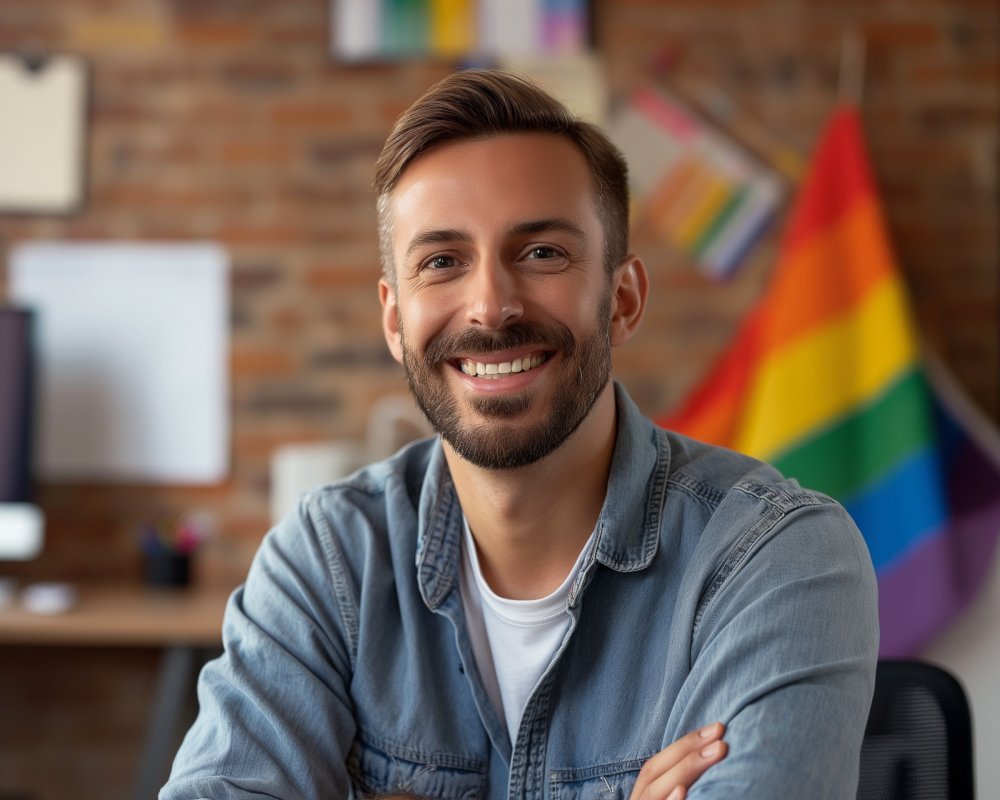
Broader Impact
Seeing these unions thrive over decades counters damaging myths—that LGBTQ relationships lack permanence or face insurmountable internal strife. In fact, same-gender love can flourish, especially when legal frameworks (e.g., marriage equality) and cultural acceptance align. These couples also illustrate the normalcy of day-to-day life—paying bills, raising children, coping with health issues—no different than heterosexual counterparts.
Conclusion: Whether film stars, talk show icons, or behind-the-scenes creators, these famous LGBTQ+ couples who have been together for over 10 years highlight enduring romance that weaves together activism, artistry, and shared values. Their steadfast commitments, often formed in times of limited legal recognition, serve as inspirational cornerstones, proving that love and partnership can surmount prejudice and stand the test of time.
8. Relationship Dynamics in LGBTQ Couples: Communication, Roles, and Intimacy
Like any union, LGBTQ couples navigate emotional intimacy, conflict resolution, and mutual support. However, they often do so under different social pressures than heterosexual couples. Understanding relationship dynamics—particularly around communication, roles, and intimacy—reveals both unique strengths and potential hurdles.
1. Communication in the Face of Societal Stigma
- Openness as Survival: Many LGBTQ individuals develop robust communication skills from having to articulate identity differences or come out to partners, friends, and family. Transparent discussions about personal boundaries, traumas, and desires often bolster emotional trust.
- Family Reactions: In supportive families, couples might navigate typical in-law dynamics. In less accepting environments, discussing how to handle holidays or family gatherings becomes crucial. Partners frequently set protective strategies (e.g., “We won’t visit if they disrespect us”).
2. Negotiating Roles and Responsibilities
- Challenging Gender Norms: Freed from strict “husband” vs. “wife” roles, many LGBTQ couples define roles more flexibly. They might split chores or finances based on skills or interests rather than traditional male/female stereotypes.
- Trans and Non-Binary Nuances: In a relationship where one partner is trans or non-binary, traditional ideas of “men’s work” or “women’s work” can feel irrelevant. Discussions revolve around comfort and affirming identity.
- Cultural Tensions: That said, some same-gender couples do replicate certain “gendered” roles—like one partner being more “masculine,” the other “feminine”—if it suits their personalities. The difference is that it’s usually a choice, not a societal imposition.
3. Intimacy and Emotional Connection
- Breaking Taboos: In societies that shame LGBTQ sexuality, couples may struggle initially to express physical intimacy openly—like holding hands in public. Intimacy can thus become deeply cherished in private spaces, symbolizing authenticity and safety.
- Exploring Sexual Freedoms: Freed from heteronormative scripts, some couples experiment with fluid sexual expressions. Consent and communication about boundaries are key, ensuring both partners feel respected and fulfilled.
- A Trauma-Informed Lens: LGBTQ individuals may carry baggage from bullying, rejection, or previous relationships overshadowed by secrecy. Partners often learn to navigate triggers with empathy, recognizing how trauma can resurface around intimacy or vulnerability.
4. Conflict Resolution and Seeking Help
- Couples Therapy: Some LGBTQ couples prefer therapists specializing in queer relationships, ensuring understanding of unique stressors (e.g., internalized homophobia, transphobia, or microaggressions).
- Peer Support: Friend circles or community centers can provide conflict mediation or relationship workshops, reinforcing that personal challenges need not be faced alone.
5. Strengths and Resilience
The very factors that differentiate LGBTQ couples—societal scrutiny, defiance of gender norms—can foster strong emotional bonds. Partners often learn early on that their success hinges on mutual support and open dialogue. This resilience, accompanied by an egalitarian approach to roles, can lead to high relationship satisfaction.
Conclusion: Relationship dynamics in LGBTQ couples blend universal elements of partnership (communication, trust, shared responsibilities) with unique layers shaped by identity and social context. A willingness to question inherited norms can nurture creativity in problem-solving and deepen emotional intimacy—demonstrating that love thrives where authenticity meets solidarity.

9. What Challenges Do LGBTQ Couples Face? Societal, Legal, and Familial Pressures
Despite growing acceptance in many regions, LGBTQ couples continue to confront significant barriers. From prejudice at home to unequal policies, these obstacles affect mental health, relationship stability, and long-term planning. Understanding what challenges do LGBTQ couples face illuminates why activism and supportive networks remain vital.

1. Societal Discrimination
- Homophobia and Transphobia: Even in societies with legal protections, day-to-day harassment—slurs, bullying, public assaults—can strain relationships. Public displays of affection, if perceived as “controversial,” may lead to confrontations or violence.
- Microaggressions: Subtle biases arise in workplaces, health settings, or among acquaintances. Comments like “Who is the man in the relationship?” or “This is just a phase, right?” undermine dignity and can cause emotional distress.
2. Familial Rejection or Conditional Acceptance
- Coming Out Tensions: Relatives might shun a child who reveals a same-gender partner, or they might “tolerate” the relationship without truly affirming it. For those from strict religious or cultural backgrounds, secrecy might linger.
- Interference: Families sometimes pressure one partner to “stay closeted” at gatherings or try to sabotage the relationship via guilt or arranged heterosexual marriages.
3. Legal and Policy Hurdles
- Criminalization: In over 60 countries, same-sex acts remain illegal. Couples living there risk arrest or public shaming, limiting their ability to cohabit or raise children.
- Lack of Marriage Recognition: Without marriage or civil union rights, couples may lack spousal benefits—immigration, tax, inheritance, hospital visitation. This can lead to separation if living abroad or challenges if one partner falls ill.
- Adoption and Parenting Restrictions: Many jurisdictions bar same-sex couples from adopting children or accessing fertility treatments, curtailing family-building prospects.
4. Financial and Healthcare Inequities
- Benefits Exclusion: Even in places with marriage equality, older systems might not fully accommodate name changes, spousal insurance coverage, or pension allocations.
- Healthcare Discrimination: Transphobic or homophobic medical professionals can complicate routine care. Fear of disclosure may discourage LGBTQ couples from seeking couples’ therapy or relationship counseling.
5. Internalized Stigma and Mental Health
- Internalized Homophobia: Decades of negative messaging can seed doubt or shame within the relationship. Partners might question the legitimacy of their union compared to heterosexual norms.
- Isolation: If extended families or communities reject them, couples might rely solely on each other or limited friend circles, which can intensify stress.
6. Intersectional Complications
Couples who also navigate racism, ableism, or class-based prejudice face overlapping hurdles. For instance, a poor, disabled, queer couple may struggle to secure accessible housing in a bigoted neighborhood that also lacks disability accommodations.
Conclusion: The challenges LGBTQ couples face span from overt legal bans to subtle everyday slights. Yet many cultivate resilience—leaning on chosen family, activist networks, or professional resources. While laws and culture evolve, stigma remains entrenched in some corners. Comprehensive solutions demand both legislative overhauls and community-based solidarity that fosters real acceptance, ensuring LGBTQ pairs can flourish without fear or prejudice.
10. Financial Planning Considerations for LGBTQ+ Couples
Financial planning is an integral part of any committed relationship, yet LGBTQ+ couples often navigate additional complexities. These range from legal recognition and inheritance rights to healthcare coverage and retirement benefits. Considering these unique challenges helps ensure financial stability and equity within queer relationships.
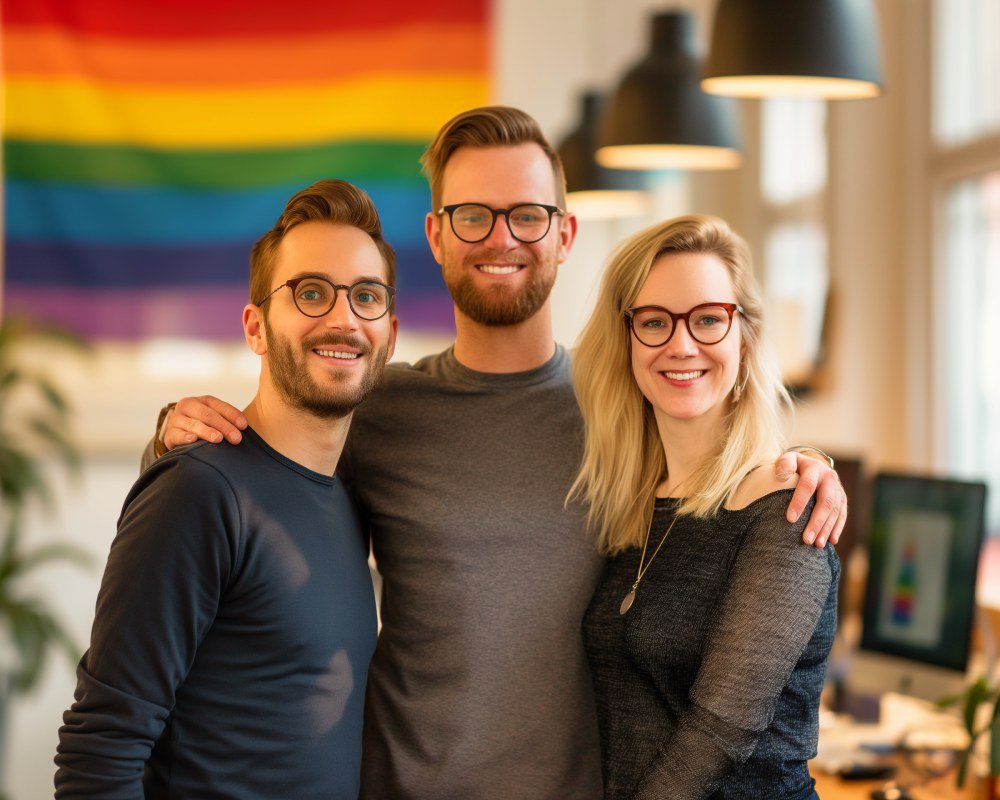
1. Legal Status and Marriage Benefits
- Marriage Equality: In jurisdictions with same-sex marriage, couples typically receive standard spousal privileges—joint tax filing, survivor benefits, and child custody rights. Still, cross-border recognition can pose difficulties if one moves to a region lacking marriage equality.
- Civil Unions vs. Marriage: Some places only offer civil unions or domestic partnerships. While these may grant certain benefits (hospital visitation, inheritance), they might not extend federal tax breaks or Social Security spousal benefits.
2. Estate Planning and Inheritance
- Wills and Trusts: Non-married or unrecognized couples especially need formal documents outlining inheritance wishes. Without these, surviving partners may be overlooked in favor of blood relatives.
- Power of Attorney: Medical and financial powers of attorney empower partners to make decisions if one falls ill. LGBTQ couples, particularly in unsupportive families, must secure these documents to avoid disputes.
3. Adoption and Child-Rearing Costs
- Legal Fees: For same-sex couples seeking adoption, surrogacy, or fertility treatments, expenses can be high. In some regions, adoption agencies remain biased or under-regulated, adding unpredictability.
- Guardian Designations: If only one parent is recognized legally, the other must formalize step-parent or second-parent adoption to protect parental rights, which can entail lawyer fees and court approval.
4. Employment-Related Protections
- Insurance Coverage: Companies might or might not offer domestic partner benefits. Married LGBTQ couples often secure spousal coverage, but states or employers may differ on recognition.
- Retirement Planning: Spousal Social Security benefits can apply to LGBTQ couples in marriage-equality countries. In places where unions aren’t recognized, alternative savings routes (individual retirement accounts, etc.) become crucial.
5. Challenges for Transgender Individuals
- Name Changes: Updating passports, bank accounts, and other financial documents can be pricey and time-consuming. Some trans individuals face discrimination from financial institutions unfamiliar with policy updates.
- Insurance Gaps: Gender-affirming healthcare might not be covered, necessitating budgeting for medical procedures or hormone therapy.
6. Intersectionality and Economic Disparities
- Minority Stress: LGBTQ people of color or from lower-income backgrounds may have less generational wealth, lacking resources to navigate costly legal processes.
- Regional Mobility: If local environments are hostile, moving to a more accepting city or country can require job transitions and housing finances.
Conclusion: While basic financial strategies—budgeting, saving, investing—apply universally, LGBTQ+ couples must be especially vigilant about legal documentation and planning. Gaining clarity on local laws, consulting with LGBTQ-friendly financial advisors, and securing the necessary legal instruments (wills, POAs) help safeguard one’s partner and future. Ultimately, thorough planning ensures that love, partnership, and commitment receive full financial and legal recognition, regardless of societal biases.
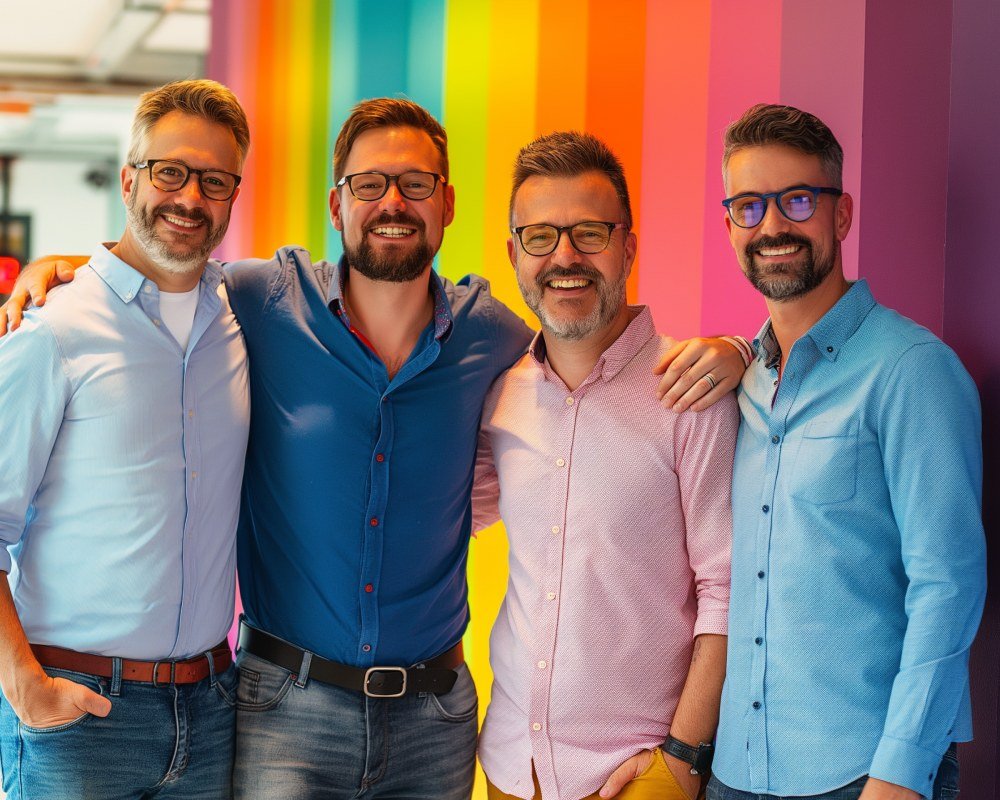
11. Parenting and Family Life: Building Households as LGBTQ Couples
For LGBTQ couples, parenting and family life present both joys and hurdles. With evolving legal frameworks and shifting societal attitudes, more queer individuals are choosing to become parents—via adoption, surrogacy, foster care, or biological means. Yet certain legal, cultural, and practical nuances accompany their journeys toward building families.

1. Adoption and Foster Care
- Legal Obstacles: In some countries or U.S. states, same-sex couples still face discrimination or outright bans when attempting to adopt. Agencies may cite “religious freedom” to reject LGBTQ applicants.
- Positive Developments: Many agencies, especially in progressive regions, actively recruit LGBTQ foster and adoptive parents, recognizing that stable homes matter more than gender or orientation.
- Second-Parent Adoption: Even if one parent is biologically related, the other partner might need formal adoption to secure legal rights. This is crucial if families travel internationally or one parent becomes incapacitated.
2. Surrogacy and Donor Insemination
- Trans and Lesbian Couples: Some couples use donor sperm to conceive, either through home insemination or fertility clinics. Legal complexities can arise if the donor later claims parental rights.
- Gay Male Couples: Surrogacy often involves an egg donor and a gestational carrier. Costs can range from tens to hundreds of thousands of dollars, depending on the region, clinic, and legal fees. Laws vary widely, with some nations banning surrogacy or restricting it to heterosexual couples.
3. Parenting Roles and Gender Norms
- Equitable Co-Parenting: LGBTQ parents often subvert traditional “mother” vs. “father” roles, dividing childcare tasks according to preference, availability, or expertise. This can foster egalitarian child-rearing environments.
- Visibility and Sensitivity: Children of LGBTQ parents may face questions at school or among peers. Families might proactively educate teachers, advocating inclusive curricula that acknowledge diverse family structures.
4. Community Support
- Parenting Networks: Groups like PFLAG (Parents, Families, and Friends of Lesbians and Gays) or Rainbow Families offer resources and a sense of belonging. They organize picnics, informational workshops, and online forums for parents to share advice on everything from adoption processes to dealing with bullies.
- Cultural Validation: More children’s books and TV shows now depict families with two moms or two dads. This representation reduces stigma for kids and normalizes the presence of LGBTQ-led families.
5. Potential Challenges
- Legal Insecurity: In locations without comprehensive protections, if the legally recognized parent passes away, the surviving partner may struggle for custody.
- Social Scrutiny: Some communities or extended relatives question whether a same-gender household can “properly” raise a child, though decades of research show no detrimental differences in children’s outcomes.
Conclusion: Despite historical barriers, LGBTQ couples globally are embracing family life more freely, ensuring that children grow up in loving, supportive environments. By securing legal documents—parental rights, wills, and guardianships—and tapping into supportive communities, these parents overcome many hurdles. The surge in visible LGBTQ parents challenges heteronormative assumptions and underscores that what truly matters is the care, guidance, and stability provided to children, not the parents’ genders or orientations.
12. Intersections of Race, Class, and Ability: Complexity in LGBTQ Relationships
The LGBTQ+ community is far from monolithic—its members inhabit multiple social identities shaped by race, class, ability, religion, and more. For LGBTQ couples, these intersections can magnify both discrimination and community bonds, influencing everything from daily life to broader activism.
1. Race and Ethnicity
- Cultural Differences: A Black same-sex couple in the U.S. might face systemic racism on top of homophobia. Meanwhile, an interracial couple could grapple with negative reactions from multiple communities.
- Immigration Challenges: Couples with differing national statuses may encounter visa hurdles, especially if one partner is from a country where same-sex relationships are criminalized. Government recognition of their partnership might be uncertain, complicating relocation or adoption plans.
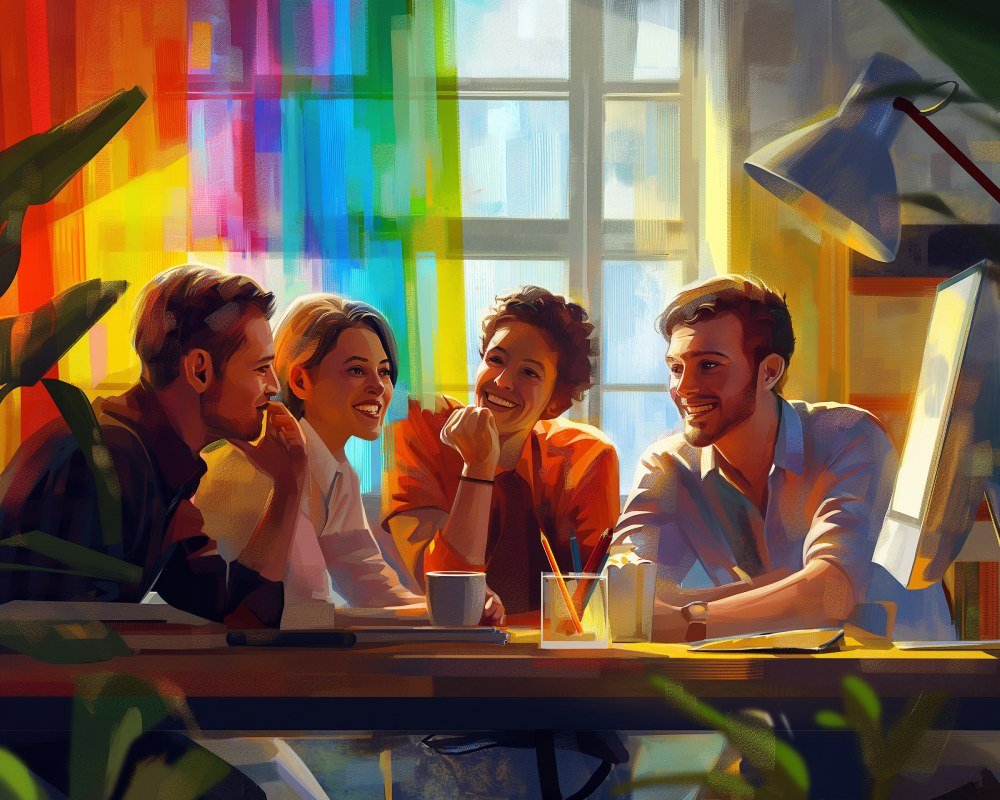
2. Socioeconomic Class
- Financial Strain: Middle- or low-income LGBTQ couples may struggle to afford surrogacy, legal documentation, or safe housing. Class disparities also impact access to mental health care or supportive networks.
- Educational Opportunities: Wealthier couples can pay for private schooling or relocate to inclusive neighborhoods, mitigating homophobic bullying. Lower-income pairs often rely on under-resourced schools or unsupportive localities, intensifying stress on children and relationships.
3. Disability and Healthcare Accessibility
- Physical Barriers: Queer and disabled couples might find LGBTQ-friendly events lacking wheelchair ramps or sign language interpreters. Some might also deal with prejudices from both disabled communities (which can be heteronormative) and LGBTQ groups (which may be ableist).
- Caregiving Roles: If one partner is disabled, the other might assume extra caregiving duties. In a society that undervalues LGBTQ families, medical professionals may overlook the healthy partner’s legal or familial rights in emergencies unless documentation is crystal-clear.
4. Religion and Cultural Traditions
- Faith Communities: Some LGBTQ couples of faith—Muslim, Jewish, Christian, Hindu, or others—face condemnation by conservative congregations. Alternatively, progressive faith groups or queer-friendly mosques/temples might offer solace and common ground.
- Traditional Norms: In some cultures, extended families heavily influence marital choices, childrearing, and cohabitation. LGBTQ couples who defy these norms may risk ostracism.
5. Intersectional Solidarity
Although these layered oppressions can be daunting, they also forge solidarity. Activists highlight that addressing racism, ableism, or classism within LGBTQ spaces is critical to ensuring true inclusivity. Many couples find intersectional community groups where members understand both queerness and other identity factors—fostering deeper empathy.
Conclusion
For LGBTQ couples, multiple identities intersect, creating challenges beyond straightforward homophobia or transphobia. A trans woman of color in a low-income household experiences a different reality than a white cisgender gay man in an upper-class neighborhood. Recognizing these distinctions is vital to form strategies addressing discrimination’s full scope. Affirming, inclusive communities—along with intersectional activism—can better represent all queer relationships, ensuring that everyone’s rights and well-being are equally championed.
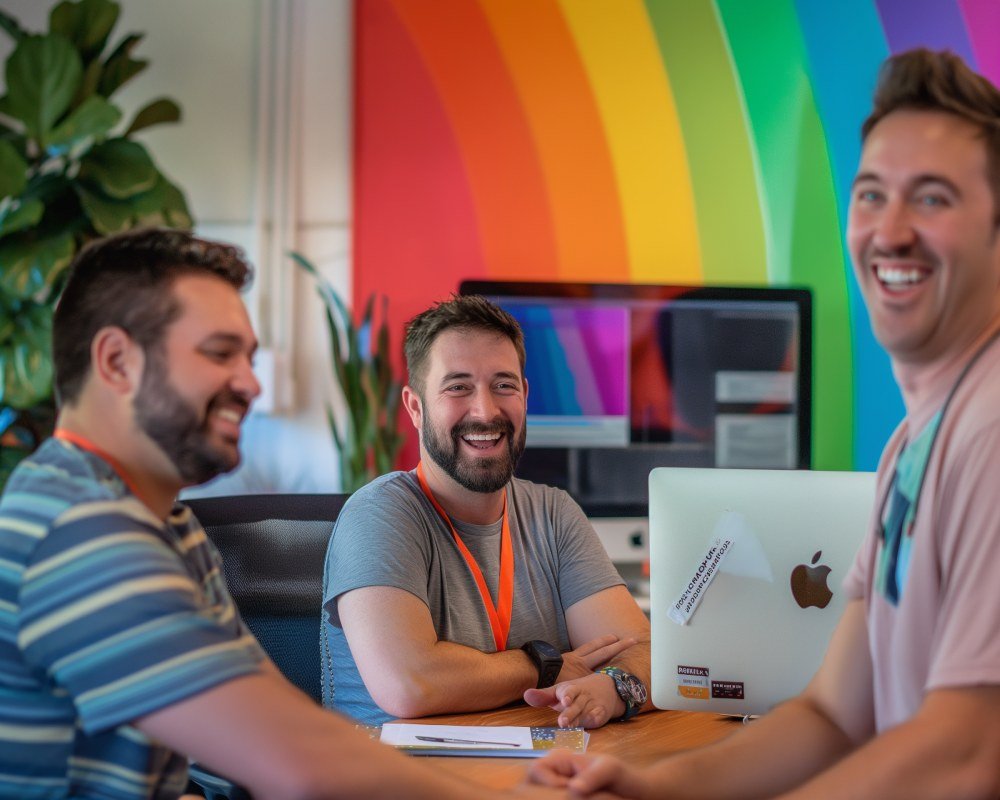
13. LGBTQ Couples in Media and Pop Culture
From earliest hidden references to today’s mainstream blockbusters, LGBTQ couples have steadily found increased representation in media and pop culture. This visibility can shift public opinion and help queer people see themselves reflected in stories of love, struggle, and triumph.
1. Early Coded Appearances
- Hays Code Era: In Hollywood’s mid-20th century, explicit same-sex relationships were forbidden on-screen. Filmmakers often resorted to subtext—two women “roommates” or men with “peculiar friendships.”
- European Cinemas: Art-house films, particularly from France or Italy, occasionally depicted queer relationships more openly, albeit sometimes tragically.

2. Turning Points
- 1970s-1980s: Indie films like “Pink Narcissus” or “Querelle” dabbled in explicit gay themes. On TV, short-lived attempts to showcase LGBTQ characters faced backlash or censorship.
- 1990s: Shows like “Ellen,” culminating in Ellen DeGeneres’s coming out, or “Will & Grace” introduced gay characters into prime-time mainstream. While romances were somewhat sanitized, these steps paved the way for fuller storytelling.
- 2000s: “Queer as Folk,” “The L Word,” and “Brothers & Sisters” expanded portrayals of LGBTQ couples beyond mere sidekicks, presenting them raising children, dealing with infidelity, or pursuing careers.
3. Contemporary Television and Streaming
- Diverse Narratives: Netflix, Amazon Prime, Hulu, and other streaming giants feature complex LGBTQ couples, from teen dramas (e.g., “Heartstopper”) to adult series (“Pose,” “Orange Is the New Black”).
- Global Reach: International hits like “SKAM” (Norway) or “2gether” (Thailand) highlight teenage gay romances with cultural authenticity, hooking international fandoms online.
- Documentaries: Real-life stories of same-sex couples fighting for marriage rights or raising families have also gained traction. Films like “A Secret Love” (Netflix) or “Bridegroom” provide emotional, personal glimpses into queer love.
4. Filmic Depictions and Critiques
- Awards Recognition: Movies like “Moonlight” or “Call Me by Your Name” garnered accolades, mainstreaming gay narratives. However, controversies persist over “straight actors playing gay roles” or sanitized portrayals that appease heteronormative audiences.
- Trans Representation: Slowly emerging, but often overshadowed by cisgender gay stories. Works like “A Fantastic Woman” center trans women’s experiences. Meanwhile, series like “Pose” highlight trans women of color forging family amidst adversity.
5. Impact on Couples Themselves
- Role Models: Seeing similar couples on screen can validate younger LGBTQ viewers, reduce isolation, and spark conversations with families or friends.
- Market Influence: Portrayals that celebrate love (e.g., same-sex proposals in commercials or gay couples in holiday ads) not only reflect but also shape consumer attitudes, normalizing LGBTQ relationships in everyday life.
Conclusion
LGBTQ couples in media and pop culture now occupy a more central narrative space than ever before, influencing how society perceives queer relationships. While representation is still uneven, the growing diversity of storytelling—across genres and platforms—marks a steady shift from coded references to openly affirming narratives. This shift fosters greater empathy, accelerates acceptance, and ensures that queer love stories resonate as universally human, bridging the gap between marginalized experiences and mainstream appreciation.
14. Activism, Marriage Equality, and the Modern Legal Landscape
Over recent decades, LGBTQ couples have emerged as a formidable political constituency, driving activism that reshapes laws and societal norms. Chief among these triumphs is marriage equality, although broader anti-discrimination efforts and recognition for parenting rights also define the modern legal landscape.
1. The Rise of Marriage Equality
- Historical Roadblocks: Prior to the 1990s, few nations considered legal recognition of same-sex partnerships. Activists fought for incremental reforms, from domestic partnerships (Denmark, 1989) to full marriage.
- Key Victories: The Netherlands led in 2001, granting same-sex marriage. Canada, Spain, and South Africa soon followed. The U.S. Supreme Court’s Obergefell v. Hodges (2015) extended marriage equality nationwide.
- Continuing Spread: Taiwan’s 2019 move marked a first in Asia, while some Latin American countries (Argentina, Brazil) also legalized same-sex marriage. The momentum continues, though many nations remain resistant.

2. Importance of Marriage Recognition
Marriage confers legal protections—inheritance rights, tax benefits, and parental authority. In countries without marriage equality, couples may face complications like:
- Hospital Visitation: Without spousal status, partners can be barred from seeing each other in medical emergencies.
- Immigration Sponsorship: Non-citizen spouses risk deportation if the marriage isn’t recognized.
- Asset Division and Alimony: Splitting property in a breakup is simpler when civil marriage laws define spousal entitlements.
3. Broader Anti-Discrimination Efforts
- Workplace Protections: Laws banning discrimination based on sexual orientation or gender identity are vital for stable employment. Even with marriage equality, firing someone for being gay or trans remains legal in some regions.
- Hate Crime Legislation: Criminal enhancements for attacks motivated by homophobia or transphobia exist in many Western nations, though enforcement and definitions vary.
- Adoption and Parenting: As marriage equality spreads, more LGBTQ couples gain access to joint adoption or assisted reproduction. Yet some states impose restrictions under religious exemptions.
4. Grassroots and Legal Activism
- Activist Groups: Organizations like Human Rights Campaign, Lambda Legal, ILGA, and Stonewall have spearheaded campaigns, lawsuits, and awareness drives.
- Strategic Litigation: Legal teams often use test cases to push for rights expansions. For instance, litigating inheritance denial or spousal pension blocks highlight injustices in courts of law.
- Public Opinion Shifts: Younger generations generally support LGBTQ rights, influencing political leaders to adapt. Pride demonstrations and viral campaigns further reframe public sentiments.
5. Resistance and Rollbacks
Despite gains, pushback persists:
- Religious Exemptions: Some jurisdictions let businesses refuse service to same-sex couples.
- Sporadic Enforcement: Marriage equality might be legal, but local officials may sabotage wedding licenses or adoption approvals in conservative areas.
Conclusion: Activism, marriage equality, and the modern legal landscape reveal an evolving, sometimes fractious terrain for LGBTQ couples. Although major victories like legalized same-sex marriage mark historic milestones, the battle extends well beyond matrimony—to comprehensive anti-discrimination policies, culturally inclusive schools, and stable adoption frameworks. Achieving true equality necessitates ongoing mobilization, community solidarity, and ever-vigilant advocacy against complacency or regressive forces.
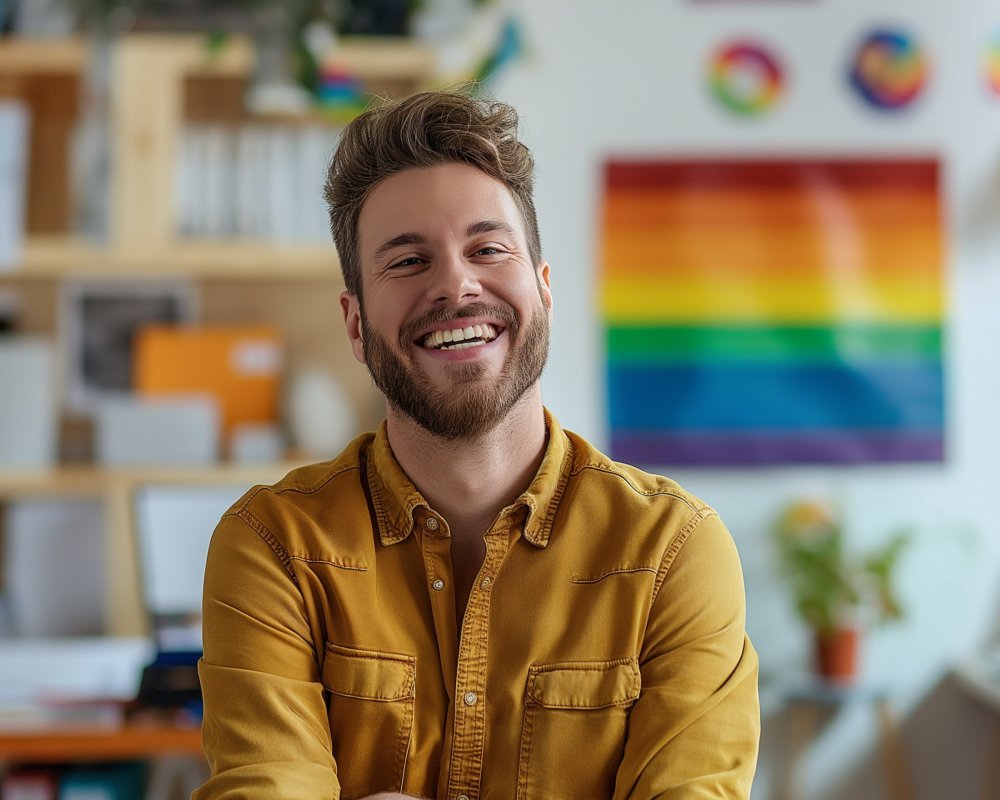
15. What LGBTQ+ Relationships Can Teach Us About Love
LGBTQ+ relationships often defy conventional scripts about romance and gender roles, revealing powerful lessons on authenticity, open communication, and mutual respect. By observing how these couples navigate love in the face of stigma, mainstream society can glean transformative insights.
1. Breaking Traditional Gender Norms
- Fluid Roles: Freed from stereotypical “husband vs. wife” divisions, many LGBTQ couples distribute tasks, emotional labor, and finances based on individual aptitudes rather than preset societal expectations. This fosters balance and negotiation.
- Equality and Autonomy: A same-gender male couple might share cooking and finances equally, or a trans woman and non-binary partner might switch roles dynamically—reminding all couples that custom should never trump choice.
2. Communication and Vulnerability
- Navigating Identity: When partners differ in orientation or transition (e.g., a bisexual person with a trans partner), they must voice needs openly to ensure emotional support. This candor fosters a habit of transparent dialogue beneficial to any relationship.
- Shared Growth: The coming-out process, for instance, can be a joint journey, deepening empathy. LGBTQ partners frequently embrace vulnerability to handle external pressures such as family disapproval or workplace discrimination.
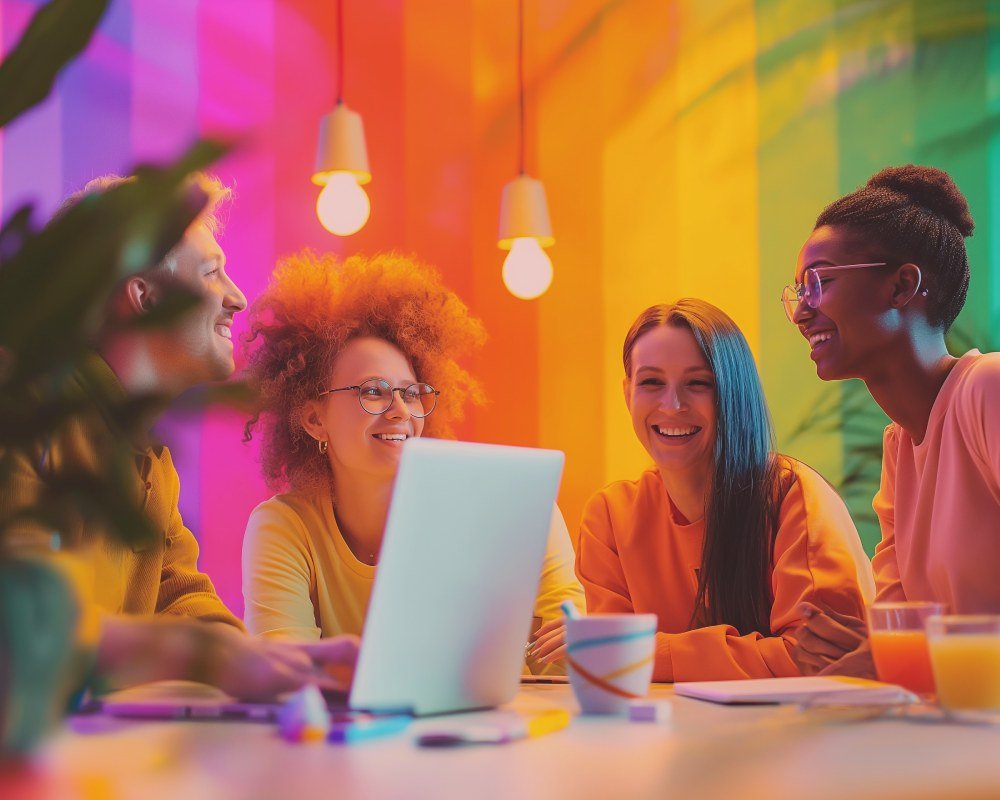
3. Building Chosen Families
- Community-Based Support: In unsupportive families, LGBTQ couples rely on “chosen families” of friends, mentors, or allies. This extended network provides emotional, financial, and spiritual backing.
- Flexibility in Family Structures: Surpassing the heteronormative nuclear model, queer relationships can integrate multiple co-parents, or multi-generational living arrangements that challenge rigid definitions of “family.”
4. Resilience Under Pressure
- Uniting Against Adversity: Coping with discrimination can strengthen emotional bonding. Couples cultivate solidarity by leaning on each other when society is less accepting.
- Adaptive Approaches: They develop problem-solving strategies—like migrating to LGBTQ-friendly areas or using digital communities to offset local hostility. This adaptability models unwavering commitment.
5. Celebration of Individual Identity
- Personal Expression: Many LGBTQ couples encourage each other’s self-discovery. If one partner explores new pronouns or sexual orientation nuances, the other often offers unwavering support, reinforcing the notion that relationships evolve as people do.
- Rejection of Toxic Masculinity or Femininity: Freed from strictly “masculine” or “feminine” roles, some queer couples show how healthy love thrives on mutual respect, empathy, and emotional intelligence—rather than confining men to stoicism and women to subservience.
6. Universal Applicability
While these traits stem from LGBTQ contexts, the wisdom transcends orientation. Straight couples also benefit from dismantling rigid roles, cultivating open communication, and forging communities that honor authenticity.
Conclusion: The question “What LGBTQ+ relationships can teach us about love?” finds its answer in the rich tapestry of experiences gleaned from couples who have navigated, adapted, and thrived despite societal constraints. Their collaborative approach to decision-making, emphasis on personal growth, and resilience in adversity collectively challenge mainstream notions of romance. Ultimately, these love stories highlight that respect, empathy, and authenticity are universal cornerstones of any lasting relationship, proving that the boldness of queer love can open hearts and minds far beyond the LGBTQ community.
16. Comparative Table: LGBTQ+ Couples Across Eras and Regions
(Approx. 500 words, including table)
Comparisons can illuminate how LGBTQ+ couples vary by time period and cultural context. Below is a comparative table highlighting key differences across eras and global regions, illustrating that acceptance, legal frameworks, and societal roles shift widely.
Table: LGBTQ+ Couples Across Eras and Regions
| Category | Historically (Pre-1970s) | Modern Western Context | Global Variation Today |
|---|---|---|---|
| Visibility | Mostly hidden; coded language in letters, underground bars; criminalization in many nations | Relatively higher visibility with Pride parades, same-sex weddings, mainstream coverage | Regions with partial or no acceptance: Some Middle Eastern, African, or Asian nations where laws still criminalize or society demands secrecy. |
| Legal Recognition | Rare; arrests for “sodomy” or “indecency.” Some exceptions in pockets of Europe. | Widespread marriage equality (e.g., many European countries, Canada, U.S. states post-2015), civil unions in others | Many countries (30+) have legalized same-sex marriage. Others maintain partial recognition, while ~65 still criminalize. |
| Social Support | Minimal formal support; secret clubs or reading societies. Families often disowned LGBTQ individuals. | Growing networks: community centers, online forums, dedicated health resources. More acceptance from younger generations. | Mixed: Some countries have robust LGBTQ+ centers, others operate underground. Varies by local culture, religion, and political environment. |
| Media Depictions | Virtually non-existent or highly censored. If present, characters coded as tragic deviants. | Open portrayal in film, TV, social media, with iconic same-sex couples. Celebrity weddings widely reported. | Expanding influence of global streaming platforms. Yet censorship remains in repressive states (e.g., content blocks). |
| Cultural Impact | Considered moral deviance by mainstream institutions (religious/political). Little to no platform for LGBTQ voices. | Shift in public opinion, with many endorsing same-sex relationships as normal. Continued conservative backlash in certain pockets. | Ranges from active persecution to partial acceptance, influenced by colonial-era sodomy laws or local traditions (two-spirit, hijra, etc.). |
| Activism & Rights | Early activism overshadowed by fear of police raids or blackmail. Pioneers (e.g., Mattachine Society). | Marriage equality, anti-discrimination, intersectional movements. Gains in court, legislative reforms. | Grassroots activism thrives under threat in some areas. International NGOs champion asylum rights, decriminalization, etc. |
| Family & Parenting | Rarely acknowledged. Children raised in secret or by “single” parents to hide orientation. | Adoption, surrogacy recognized in many countries. “Rainbow families” visible, supported by legal frameworks. | Patchwork: Some progressive states allow full adoption rights, others ban it. Societal stigma persists in conservative societies. |
| Challenges | Legal persecution, forced marriages, complete invisibility. | Hate crimes, religious exemptions, social microaggressions continue. Not universal equality. | In countries lacking protections, risk of violence, job loss, ostracism. Some migrant couples seek asylum. |
Observations
- Progress Isn’t Linear: While Western nations have made notable leaps since the 1970s, backlash and political changes can reverse or stall reforms.
- Cultural Context Matters: Local religious beliefs, colonial histories, and media control shape whether LGBTQ couples find acceptance or persecution.
- Increased Visibility: Global digital platforms allow transnational connections and advocacy. Yet this also exposes couples to potential online harassment or government surveillance in repressive locales.
Conclusion: This comparative table underscores that LGBTQ+ couples live in dramatically different realities depending on era and region. While some enjoy marriage rights, open displays of affection, and media celebration, others endure clandestine existences. Understanding these variances fosters empathy for the continuing fight for equality worldwide—a reminder that progress in one place doesn’t negate urgent struggles elsewhere.
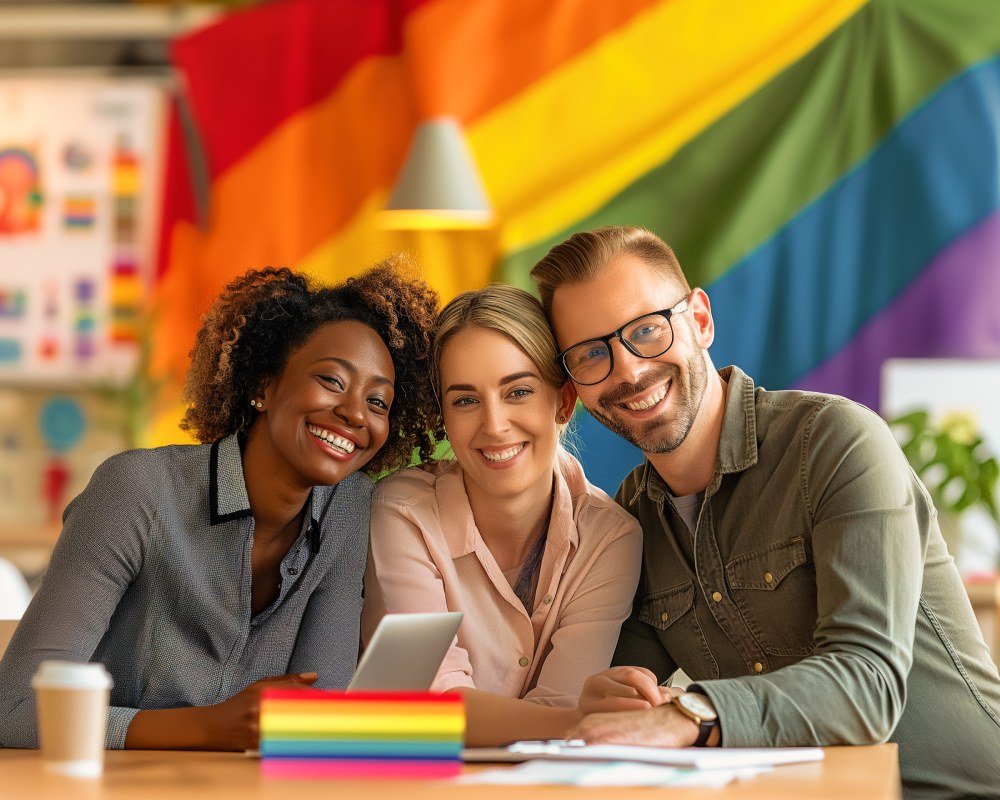
17. Key Takeaways and the Future of LGBTQ+ Couples
LGBTQ+ couples embody the spectrum of human relationships, demonstrating love and commitment across cultural, legal, and societal terrains. Reflecting on the topics covered—from historical invisibility to modern media depictions, from celebrity examples to everyday partnerships—we can distill several key takeaways and envision the future for these relationships.
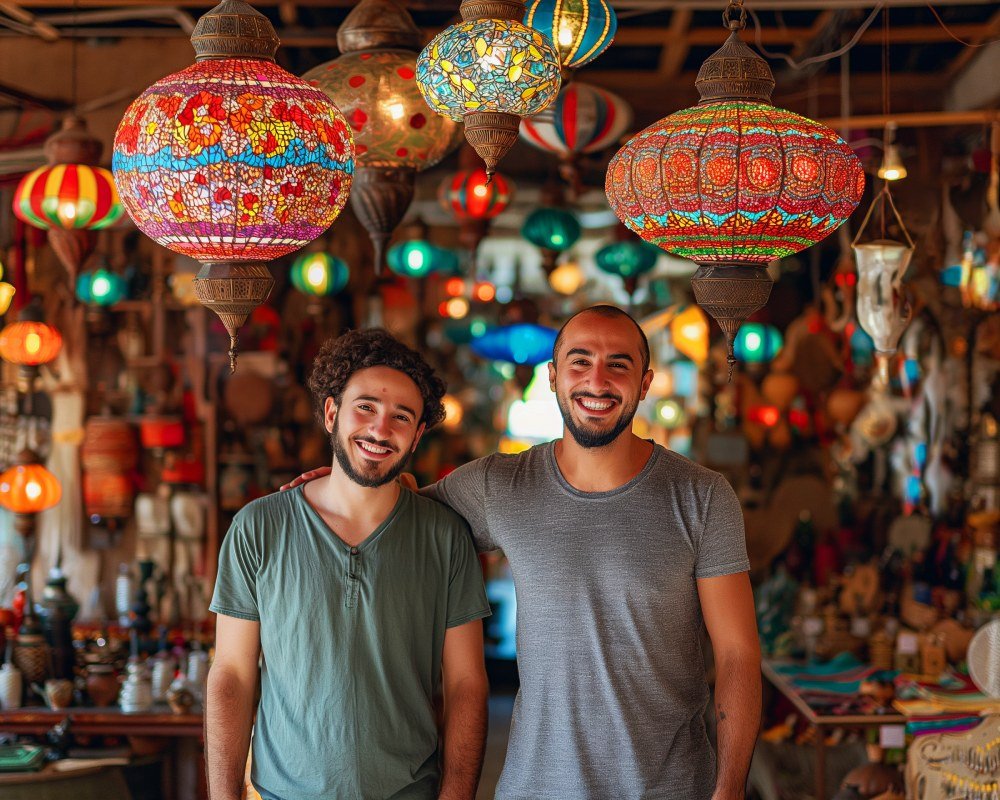
1. Love Across Boundaries
- Universal Desire: Regardless of orientation or gender identity, the need for connection, intimacy, and companionship is shared by all people.
- Diversity of Expression: LGBTQ couples prove that healthy relationships don’t rely on rigid gender roles. Negotiation, shared power, and open communication can foster deep relational satisfaction.
2. Ongoing Challenges Remain
- Legal Limitations: Many parts of the world still criminalize same-sex relationships. Marriage equality and adoption rights, while gaining ground, remain incomplete.
- Societal Stigma: Homophobia, transphobia, and family rejection can erode couples’ well-being. Intersectional discrimination (race, class, disability) further compounds difficulties.
3. The Power of Representation
- Celebrity and Media Influence: High-profile LGBTQ couples and mainstream portrayals can spark acceptance. Yet, caution is needed to avoid tokenization or oversimplified stories.
- Authentic Narratives: Documentaries, memoirs, and grassroots testimonials offer a richer lens on queer family life than glossy Hollywood rom-coms alone.
4. Community Support as Lifeline
- Chosen Families: Extended networks of friends and allies fill gaps when biological families reject an LGBTQ couple. These social structures also provide mentorship and crisis support.
- Resources: Organizations, counseling, financial planning, and legal aid can significantly buffer adversity. Access to culturally competent services is especially vital in smaller cities or conservative areas.
5. Shifting Mindsets and the Road Ahead
- Younger Generations: Many Gen Z and Millennials embrace fluid orientations and non-binary identities, normalizing varied forms of partnership. This evolution suggests that rigid definitions of “couple” will continue to soften.
- Global Movements: Activists push for expanded rights—beyond marriage—like comprehensive anti-discrimination laws, trans healthcare coverage, and parental recognition worldwide. Diplomatic pressure and NGO work remain crucial in resisting regressions.
The Future
- Technological Innovations: Dating apps, telemedicine for therapy, and online activism will intensify global collaboration. Couples in isolated regions can find community online, possibly driving local acceptance.
- Cultural Shifts: With more Pride events, supportive faith organizations, and inclusive school policies, the next generations may grow up viewing LGBTQ couples as an ordinary part of the social fabric.
- Intersectional Advocacy: Recognition that race, disability, and economic class shape an LGBTQ couple’s experience fosters broader coalition-building. Policies that tackle overlapping injustices are likely to gain traction.
Conclusion: LGBTQ+ couples stand at the intersection of personal love and collective activism. Their relationships reflect society’s capacity for both prejudice and progress. As laws, cultural depictions, and generational attitudes evolve, these couples will likely occupy an even stronger place in mainstream life, challenging outdated norms and modeling new forms of intimacy, cooperation, and resilience. In short, their future is not just about assimilation into traditional structures but also about enriching the tapestry of human relationships with creativity, fluidity, and authenticity.
Advertisement · Scroll to continue

More Recommended
How do I start DEI at work?
How do I start DEI at work? – Starting Diversity, Equity, and Inclusion (DEI) initiatives [...]
Connecting with Lesbian consumers: best practices for marketing success
Capturing the Lesbian Market: Strategies for Successful Marketing The lesbian community is a powerful and [...]
Olivia Cruises Offers Escape for Lesbian Travelers
Olivia Cruises Offers Escape for Lesbian Travelers – Are you a lesbian traveler looking for [...]
Exploring Gay Relationships in the Digital Age
Exploring Gay Relationships in the Digital Age – Relationships in the digital age have drastically [...]
What Is Gay Pride Month?
What Is Gay Pride Month? Understanding Its Meaning, History, and Global Significance Many people ask, [...]
Top 12 Tips When Booking Your Olivia Cruise
Top 12 Tips When Booking Your Olivia Cruise – Going on a cruise is always [...]
What Are The Best Gay Oriented Credit Cards?
What Are The Best Gay Oriented Credit Cards? – The vibrant world of LGBTQ+ finance [...]
Is It Okay for Gay Teachers to Come Out?
Is It Okay for Gay Teachers to Come Out? – Coming out as gay or [...]
Safest Countries for Gay Travelers in 2025
Safest Countries for Gay Travelers in 2025 – In the evolving world of 2025, the [...]